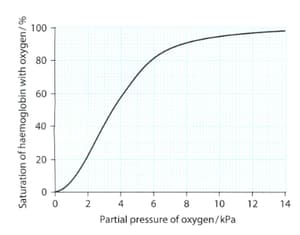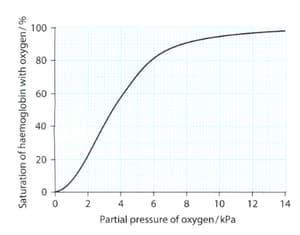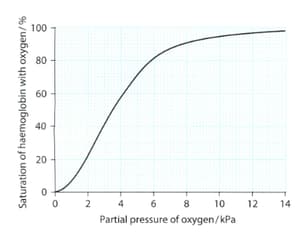Mary Jones, Richard Fosbery, Dennis Taylor and, Jennifer Gregory Solutions for Chapter: Transport in Mammals, Exercise 9: Questions
Mary Jones Biology Solutions for Exercise - Mary Jones, Richard Fosbery, Dennis Taylor and, Jennifer Gregory Solutions for Chapter: Transport in Mammals, Exercise 9: Questions
Attempt the practice questions on Chapter 8: Transport in Mammals, Exercise 9: Questions with hints and solutions to strengthen your understanding. Biology for Cambridge International AS & A Level coursebook 2nd Edition Digital Access solutions are prepared by Experienced Embibe Experts.
Questions from Mary Jones, Richard Fosbery, Dennis Taylor and, Jennifer Gregory Solutions for Chapter: Transport in Mammals, Exercise 9: Questions with Hints & Solutions
Use the given dissociation curve in the given figure and answer the question:
The partial pressure of oxygen in the alveoli of the lungs is about 12kPa. What is the percentage saturation of haemoglobin in the capillaries in the lungs?

Use the given dissociation curve in the given figure and answer the question:

If 1 gm of fully saturated haemoglobin is combined with 1.3 cm3 of oxygen, how much oxygen will 1 gm of haemoglobin in the capillaries in the lungs be combined with?
Use the given figure and answer the question:

The partial pressure of oxygen in an actively respiring muscle is about 2 KPa. What is the percentage saturation of haemoglobin in the capillaries of such a muscle?
Use the given dissociation curve in the given figure and answer the question:

How much oxygen will 1 gm of haemoglobin in the capillaries of this muscle be combined with?
Build up a list of three ways that the haemoglobin is related to its function as an oxygen transport molecule in the blood. Give a brief explanation of how the structure of haemoglobin helps it to carry out its functions.
